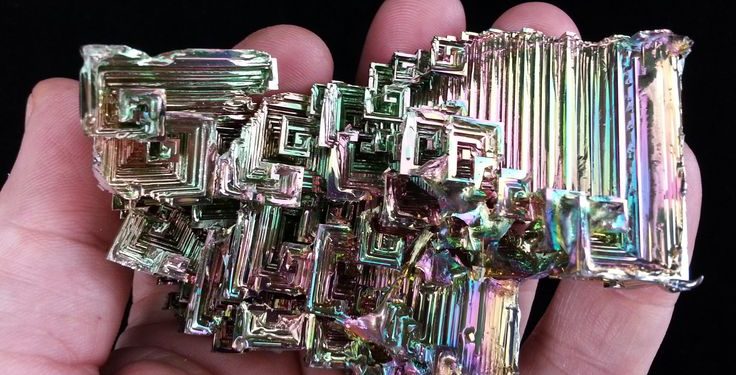Bismuth, an element often overshadowed by its more renowned counterparts, holds within its crystalline form a mesmerizing allure. In this article, we delve into the unique properties of crystal bismuth, uncovering the reasons behind its fascination among scientists, artists, and enthusiasts alike.
Crystal bismuth, a crystalline form of the element bismuth, exhibits striking colors and geometric patterns, making it a captivating subject of study and admiration. Its intricate crystalline structure sets it apart from other minerals, rendering it a gemstone of distinct allure. While bismuth itself has been known since ancient times, it was not until the modern era that crystal bismuth’s unique properties were fully appreciated and explored.
History and Discovery
The history of bismuth traces back to ancient civilizations where it was often confused with lead and tin due to its similar appearance. However, the distinct properties of bismuth began to be recognized during the Renaissance era. Alchemists and metallurgists, fascinated by its properties, began to isolate it as a separate element. It wasn’t until the 18th century that bismuth was officially recognized as a distinct element by chemists Claude Geoffroy and Torbern Bergman.
Unique Physical Properties
Crystal Structure
One of the most captivating aspects of crystal bismuth is its unique crystal structure. Unlike many other crystals, bismuth forms intricate, stair-step-like structures when crystallized. These formations result from the element’s high atomic mass and unique crystalline lattice arrangement, leading to its distinct appearance and properties.
Iridescent Colors
Perhaps the most striking feature of crystal bismuth is its iridescent hues. As light interacts with the crystal’s surface, it refracts and diffracts, creating a stunning display of colors reminiscent of a psychedelic dream. The colors range from vibrant blues and greens to purples and yellows, captivating observers with their ethereal beauty.
High Density
Despite its brittle nature, bismuth is surprisingly dense, giving it a substantial feel and enhancing its appeal in various applications. This high density, coupled with its unique crystalline structure, contributes to its durability and visual appeal.
Applications in Various Industries
Crystal bismuth’s unique properties find application across diverse industries, including:
Electronics
In the electronics industry, bismuth’s low thermal conductivity makes it ideal for certain applications. Bismuth-based alloys are used in soldering applications, where their low melting point helps prevent thermal damage to delicate electronic components.
Jewelry
The vibrant colors and unique patterns of crystal bismuth make it a sought-after material in artisanal jewelry. Craftsmen and designers incorporate bismuth crystals into earrings, pendants, and other accessories, adding a touch of elegance and uniqueness to their creations.
Medicine
Bismuth compounds have been used in medicine for centuries, owing to their therapeutic properties. Bismuth subsalicylate, for example, is commonly used to treat gastrointestinal issues such as indigestion and diarrhea. Additionally, bismuth compounds are being investigated for their potential antimicrobial properties, opening up new avenues for medical research and treatment.
Environmental Impact and Sustainability
Unlike many other minerals, bismuth mining and extraction processes have a relatively low environmental impact, making crystal bismuth a more sustainable choice in various applications. However, as demand for bismuth continues to grow, it is important to implement responsible mining practices to minimize environmental harm and ensure the long-term sustainability of bismuth resources.
Mining and Extraction Process
Bismuth is primarily obtained as a byproduct of other metal extraction processes, such as lead and copper mining. The extraction involves several stages of purification to obtain high-purity bismuth suitable for crystal formation. While traditional mining methods have been used for centuries, advancements in technology and techniques have made bismuth extraction more efficient and environmentally friendly.
Rarity and Value
While bismuth itself is relatively abundant in the Earth’s crust, the formation of crystal bismuth with desirable properties is rare. This rarity, combined with its unique appearance and properties, contributes to its perceived value among collectors and enthusiasts. High-quality bismuth crystals can command significant prices in the market, especially those with vibrant colors and intricate patterns.
Artistic and Decorative Use
Artists and craftsmen value crystal bismuth for its aesthetic appeal, incorporating it into sculptures, ornaments, and decorative pieces to add a touch of elegance and uniqueness. The vibrant colors and geometric patterns of bismuth crystals make them a popular choice for artistic expression, inspiring creativity and imagination.
Healing Properties and Spiritual Significance
In alternative medicine and spiritual practices, crystal bismuth is believed to possess healing properties, promoting balance and harmony within the body and mind. Some practitioners use bismuth crystals for meditation and energy healing, believing that they can help align the chakras and promote spiritual growth. While scientific evidence supporting these claims is limited, many people find comfort and solace in the use of bismuth crystals for holistic wellness.
Comparison with Other Crystals
Crystal bismuth stands out among other crystals due to its distinct structure, colors, and properties, setting it apart as a unique and fascinating specimen. While other crystals may exhibit similar iridescence or coloration, bismuth’s stair-step crystal structure and metallic luster make it easily distinguishable from other minerals. Additionally, bismuth’s relatively low cost and availability compared to rare gemstones make it a popular choice for collectors and enthusiasts.
Cultural Significance
In various cultures, bismuth holds symbolic significance, representing transformation, growth, and spiritual enlightenment. Ancient civilizations often associated bismuth with the divine due to its vibrant colors and unique properties. In modern times, bismuth continues to be revered for its beauty and symbolism, with some cultures incorporating bismuth crystals into religious rituals and ceremonies.
Future Prospects and Research
Ongoing research aims to unlock further potential applications and understand the underlying properties of crystal bismuth, paving the way for innovative uses in technology, medicine, and beyond. Scientists are exploring new methods for synthesizing bismuth crystals with enhanced properties, as well as investigating their potential applications in fields such as photonics, catalysis, and energy storage. As our understanding of bismuth continues to evolve, so too will its role in shaping the future of science and technology.
Conclusion
In conclusion, crystal bismuth’s unique properties, including its intricate crystal structure, iridescent colors, and diverse applications, make it a captivating subject of fascination and exploration. From its historical significance to its modern-day applications, bismuth continues to intrigue and inspire scientists, artists, and enthusiasts around the world. Whether admired for its aesthetic beauty, valued for its practical applications, or revered for its spiritual significance, crystal bismuth remains a timeless symbol of nature’s creativity and complexity.











































































